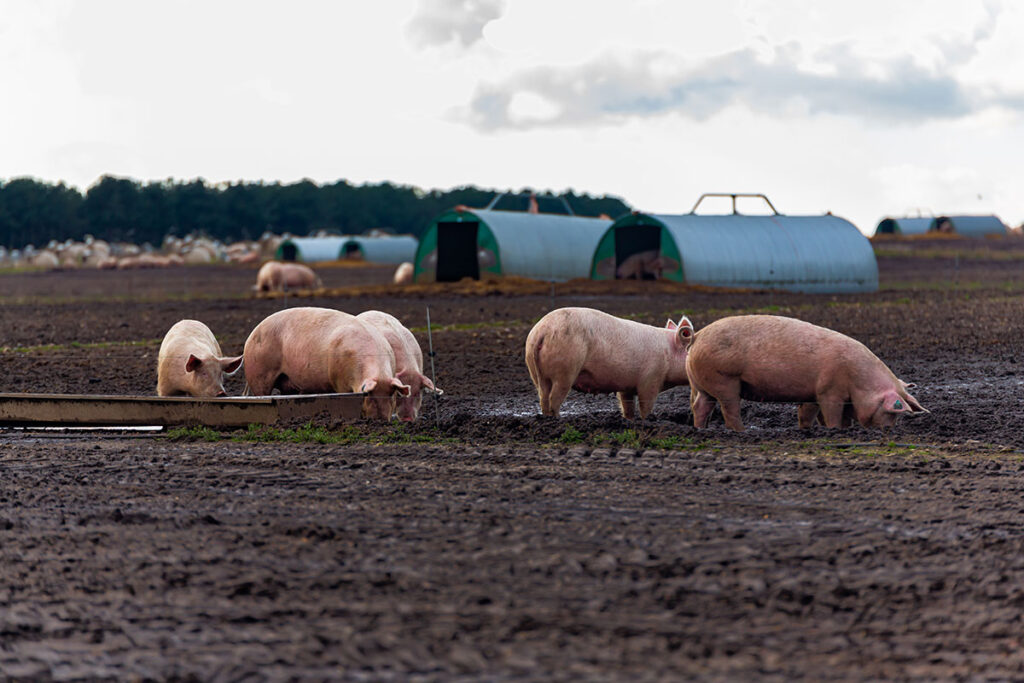Garth Pig Practice vet Toby Allcock explains the uses of non-steroidal anti-inflammatory drugs in pig farming.
has been part of the veterinary team at Garth Pig Practice since September 2020, having graduated from the Royal Veterinary College in London, and assists a wide variety of producers, predominately based in Yorkshire
With ever-increasing pressure to cut antibiotics use on pig farms, it is crucial to have a good understanding of other medications that are available.
While they may not always be an appropriate alternative, maximising their value can not only help with using fewer antibiotics but, in some cases, can also have a significant benefit for health and production.
NSAIDs stands for non-steroidal anti-inflammatory drugs, and while you may not have heard them called this before, it is likely you have seen and used them on farm. As their name suggests, these are medicines that have an anti-inflammatory effect, but they aren’t steroids.
The most common drug in use is meloxicam, but ketoprofen and sodium salicylate are also available. There are injectable, oral and in-water formulations that are all licensed in pigs in the UK.
These drugs work by acting on a receptor in the body called COX. There are two types of COX receptor, helpfully called COX-1 and COX-2. These drugs reduce inflammation by inhibiting the COX-2 receptor, as well as providing pain relief and helping to reduce fever in animals with a high temperature.
Since most conditions that affect pig health will either be painful, cause inflammation or raise their temperature, these drugs can be incredibly helpful in their treatment.
While limited research has been done into their use in pigs, one study showed significant improvement in lameness in sows on a commercial farm following a five-day course of ketoprofen. It is important to remember that there will very often be an infectious agent involved in these diseases, and NSAIDs should at times be used with antibiotics.
A more recent study showed a very promising use of NSAIDs. When oral meloxicam was administered to sows at the time of farrowing, it improved the level of antibodies in their colostrum. This then led to improved weaning weights for their piglets and a reduced number of antibiotic treatments being needed.
What are the downsides to using these kinds of drugs? The answer lies in the COX-1 receptor. The NSAIDs used in pigs will also inhibit these receptors, which reduces gastro-intestinal tract performance.
Specifically in animals with enteric disease and poor appetite, this can lead to negative side effects, particularly an increased incidence of stomach ulcers.
While there are limitations to using these drugs, the lack of detailed research means the above may just scratch the surface of their benefits. I suspect we could be seeing a lot more of them in the years to come.




